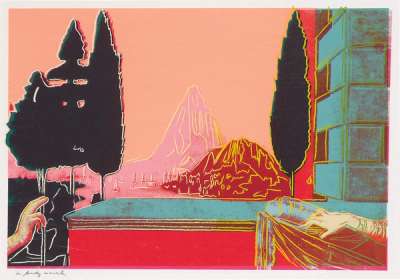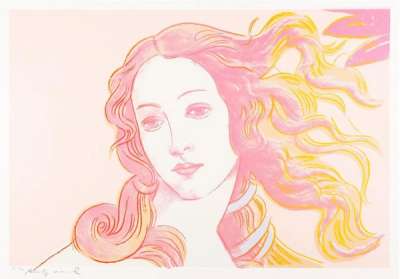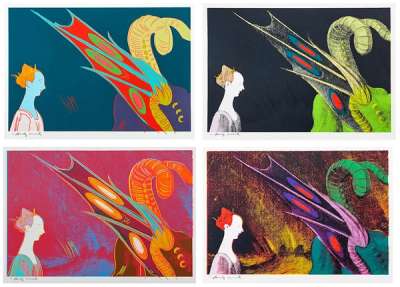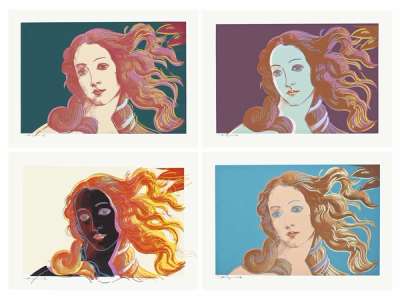Can Machine Learning & Blockchain Solve The Great Art Authentication Dilemma?

 Details Of Renaissance Paintings (Sandro Botticelli, Birth Of Venus, 1482) (F. & S. II.319) © Andy Warhol 1984
Details Of Renaissance Paintings (Sandro Botticelli, Birth Of Venus, 1482) (F. & S. II.319) © Andy Warhol 1984Live TradingFloor
In the art world, the twin challenges of authentication and forgery have persisted across centuries, evolving with each technological advance. Our Art & Tech series continues as Charlotte Stewart sits down with Denis Moiseev, CEO of Hephaestus, a company that could revolutionise how the art market approaches these challenges. Named after the god of the forge, Hephaestus aims to arm the art world with the tools necessary for greater liquidity and transparency. This episode delves into the innovative use of machine learning and blockchain technology in authenticating artworks.
Listen to the complete episode here:
Hephaestus: A New Innovator in Art Authentication
Moiseev explains that Hephaestus was founded out of frustration with the existing, fragmented approach to authentication in the secondary art market. Traditional methods were costly, time-consuming, and often inaccurate. Hephaestus's mission was to consolidate the authentication process, using cutting-edge technology to provide definitive authenticity guarantees backed by insurance. This holistic approach includes in-house provenance research, scientific analysis, and the innovative use of a machine learning algorithm named Pictology.
Leveraging Technology for Certainty in the Art Market
Machine Learning's Role in Authentication
The incorporation of machine learning into Hephaestus's methodology marks a significant advancement. Moiseev details how this technology surpasses traditional scientific analysis by identifying the unique characteristics of an artist's work with remarkable accuracy. This objective, data-driven approach offers a new layer of certainty in authentication, making the process faster and more cost-effective.
Blockchain for Immutable Records
Blockchain technology further enhances Hephaestus's service by decentralising and securing the authentication process. By recording results on the blockchain, Hephaestus ensures that data cannot be altered, addressing issues of trust and forgery within the authentication process itself. Digital certificates on the blockchain replace vulnerable paper certificates, providing a secure, unforgeable record of authenticity.
The move towards automating expertise through technology has been met with hesitancy in some corners of the art market. Moiseev acknowledges these concerns but remains focused on paintings and unique works as their primary target. The company's foray into drawings and works on paper signifies a cautious yet determined approach to expanding their technology's application.
The Collector's Journey to Authentication
Moiseev expresses a desire for collectors to seek Hephaestus's authentication services before, rather than after, a sale is completed. The process involves thorough scientific analysis, sometimes requiring samples to be taken from the artwork. Despite the invasive nature of this analysis, it provides a comprehensive authentication that can significantly impact a work's value and the collector's confidence.
Beyond Authentication: Forging a New Market
Forgery within the art market is more common than many would like to admit. Hephaestus finds that a significant portion of the works brought to them post-sale are forgeries, highlighting the need for preemptive authentication. By focusing on incentivizing authenticity, Hephaestus aims to catalyse a market shift towards greater transparency and liquidity, reducing the risks associated with art transactions.
The debate between AI and human connoisseurship in authentication is one that Hephaestus navigates with care. Moiseev views these methods as complementary rather than competing, with machine learning providing granular analysis that enhances the human expert's assessment. This balanced approach aims to achieve a new level of certainty in authentication, respecting the strengths of both human and machine.
Hephaestus is not merely offering a new tool for authentication but is envisioning a future where the art market operates with unprecedented confidence and security. By harnessing machine learning and blockchain, Hephaestus is poised to address the age-old dilemmas of forgery and authenticity, promising a more transparent, liquid, and trustworthy art market. As technology continues to evolve, the partnership between Hephaestus and the art community will undoubtedly shape the contours of art commerce for generations to come, ensuring that collectors, galleries, and artists alike are armed with the best defences against forgery.
















































